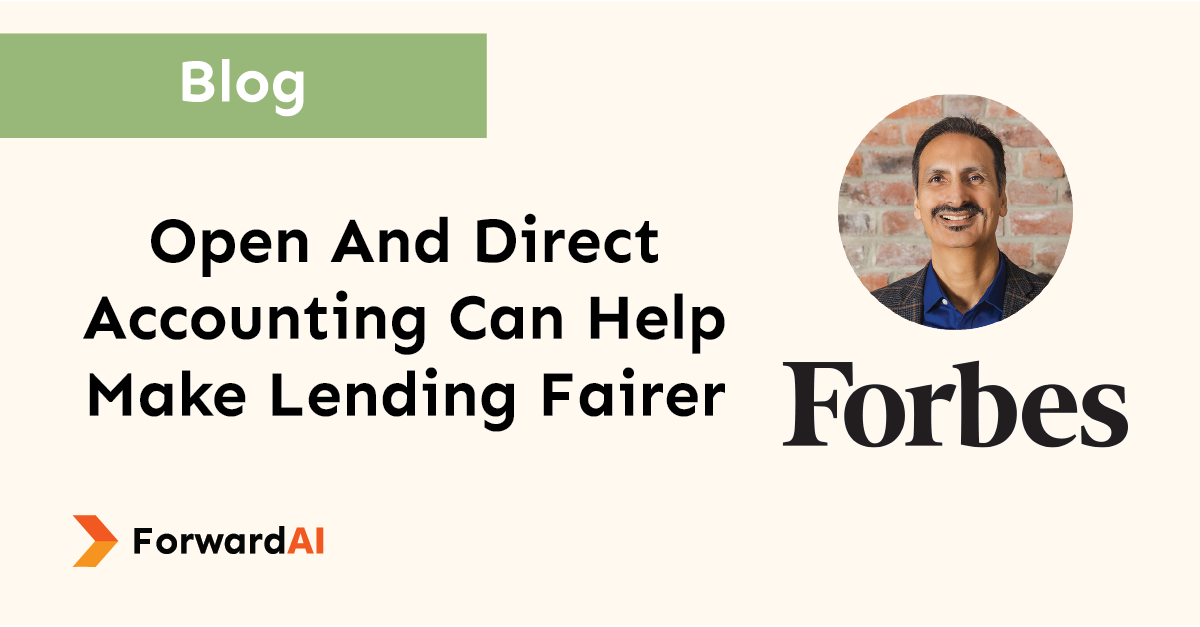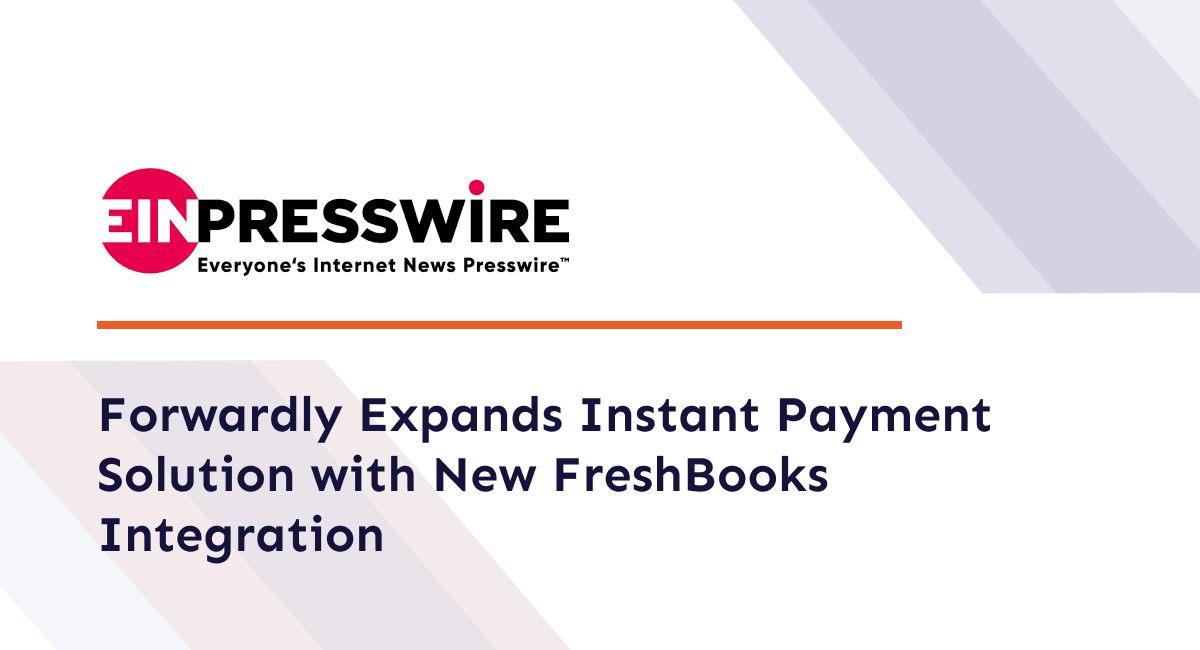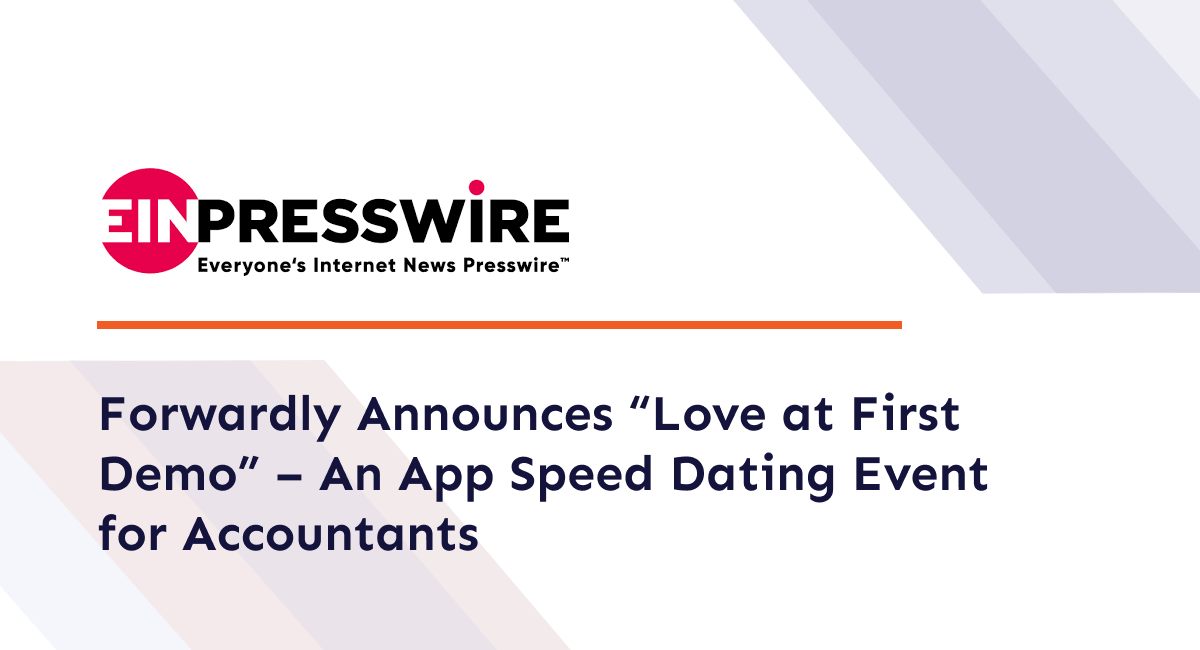Open And Direct Accounting Can Help Make Lending Fairer

Originally published on Forbes.com
Nick Chandi is the CEO of ForwardAI, which offers easy, versatile business data access and analysis for banks, lenders, and fintechs.
Data is the driver for lending decisions, particularly for small businesses that rely on their cash flow to fund operations. While banks tend to use different criteria for their lending decisions, most banks review the same data points to arrive at their decisions. Banks offer businesses many different loan products that range from traditional loans to lines of credit and credit advances, but as business models evolve, lenders haven’t changed how they underwrite these loans.
Maybe it’s time they do though.
The CFPB recently released a congressionally mandated proposal that would require lenders originating at least 25 small-business loans to collect and send data to identify barriers to credit. The CFPB is looking to see whether lenders are meeting borrowers’ needs.
Using data differently and streamlining underwriting processes can help banks create new lending opportunities that lower barriers to credit and eliminate human error and bias.
Every lender is different in that they focus on different segments of the small-business market, they offer different products and they have their own criteria for lending decisions. What they have in common though is that they all use data. Some lenders may rely on a credit score to determine the loan’s rate, while others focus on the business’s cash flow. Traditionally, lenders review a business’s bank statement, P&L, balance sheet and accounts payable to ascertain whether that business is stable or growing. For smaller businesses, a lender may also review the owner’s credit scores and personal financial statements.
This data captures a point in time rather than the dynamic nature of a business. Also, there’s no way to determine the accuracy of this data and whether it’s up to date. Having access to real-time data can help provide a more accurate picture of that business to see how its operations change day to day and week to week. New lenders make decisions based on real-time data from an accounting system rather than balance sheets and scores. This method helps lenders more accurately ascertain the financial health of a business.
Obtaining data directly from an accounting system requires having the right software to integrate with the various accounting and banking systems that small businesses use. Open finance-enabled technology seeks to enable lenders to integrate with many different accounting systems used in the U.S. and Canadian markets, as well as multiple banking systems, so that lenders have access to real-time accounting data. Focusing on historic performance is important, but so are trends and variances. It’s also important to have a deeper understanding of a business’s cash flow and whether it’s sufficient to repay a loan.
Historically, small businesses had to manually upload their financial information from various accounting systems. Open finance seeks to allow businesses to seamlessly share accounting data with third parties. When lenders have access to this data through open finance-enabled technology, that lender can identify opportunities that may help a small business more effectively manage its balance sheet.
Many small businesses use cloud-based accounting systems, and modern lending technology can capture this data, standardize it and then deliver the data to lenders, investors or banks through a standard API. With open finance, the lender will send a link, and the small business will enter their credentials to share their accounting data. The process for the small business and lender is seamless when an API integrates the systems.
Now, lenders have access to a business’s customer and vendor lists, as well as insight on hundreds of data points and how their profits are changing in real time. Since a lender can track a business’s financials on an ongoing basis, if that business is declined for a loan, the lender can review the business down the road to determine if the business is eligible for a loan. Lenders have various parameters that drive their underwriting decisions, and when a business hits enough of those parameters, the lender may decide to send the business an offer. Loan pre-approvals can be automated based on predefined criteria rather than the lender manually reviewing an application from the small business.
Having the right data is key to making the right lending decisions, and modern lending technology can help predict a small business’s future financial health with its detailed analytics and proprietary financial health scoring. By analyzing all aspects of a small business’s financials and historic accounting data, including top revenue months, customers and vendors, profit and loss statements, and balance sheets, these tools provide one assessment of a small business’s viability that ultimately works to reduce the risk associated with small-business lending.
While some banks may worry direct connections could lead to a “data overload,” the opposite is often true. For small-business underwriting specialists that spend their careers reviewing small-business data, it often takes hours of manual effort slogging through statements and spreadsheets — including supporting documentation that may not even have been requested by the lender. Open finance APIs give underwriters the ability to highlight and request only specific data points, which is invaluable and can save time.
Typically, a small-business owner that requires a loan has a realistic understanding of the depth of required financial information and is willing to work with the lender. For many people, phishing attempts and scams abound, and those are often driven by manual collection methods such as emailed statements. By offering a secure data connection option via APIs, banks will reassure current small-business clients, gain interest from potential clients and capture market share.
Lenders have much to gain from a fully digitized experience with APIs that give access to real-time data. Automated, data-driven lending decisions lend themselves to be fairer and free of bias, helping reduce some of the historic barriers identified by the CFPB. While businesses may rightfully have hesitation to share their data, open finance seeks to outweigh the risk with the promise of growing a business in today’s fast-paced environment. When a bank can see in real time if a business has opened a line of credit or purchased an asset with cash, it can be better prepared to meet a small business’s financing needs. Access to capital is key to helping a small business grow and flourish, and open finance-enabled tools seek to help make this happen.
Originally published on Forbes.com


